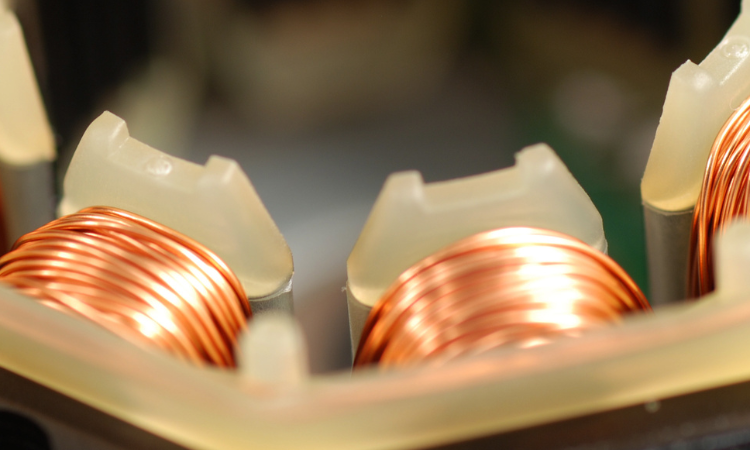Stator Stacks: The Key to Boosting Electric Vehicle Performance and Efficiency

EVs are revolutionizing the automotive sector, and stator stacks are essential for increasing motor power and efficiency. These frequently disregarded parts are crucial to the dependability, performance, and range of EVs.
What Are Stator Stacks?
A stator stack consists of numerous layers of stator laminations—thin sheets of electrical steel that are stacked together to form a rigid core. These laminations are essential for reducing energy losses in the electric motor. By minimizing the resistance to the magnetic flux, stator laminations help the motor operate more efficiently, translating into longer driving ranges for EVs.
The stator stack’s function is to generate a steady and effective magnetic field that works with the rotor to generate rotational motion. The quality and design of the stator stack can significantly influence the overall efficiency, torque, and power output of the motor, making it a key factor in EV performance.
The Role of Stator Laminations
Stator laminations are the backbone of the stator stack, and their design can directly impact the motor’s efficiency. Core losses in a motor occur due to resistance in the stator’s magnetic field, leading to wasted energy. To combat these losses, manufacturers use specialized lamination materials, such as silicon steel, that have low hysteresis loss and high magnetic permeability.
These materials help ensure that the stator stack operates with minimal energy wastage, improving the efficiency of the motor. In EVs, where maximizing energy use is critical to extending driving ranges, the role of high-quality stator laminations cannot be overstated.
Manufacturers like Gator are at the forefront of developing advanced stator laminations that are precisely engineered to optimize motor performance. By utilizing cutting-edge materials and manufacturing techniques, they produce stator stacks that significantly reduce energy loss, enhance the motor’s torque, and provide higher power density, making their electric vehicle motors more efficient and longer-lasting.
Enhancing EV Performance and Efficiency
The demand for electric vehicles with better performance and longer ranges continues to grow. EV manufacturers are always looking for methods to improve the performance of their motors in order to fulfill these demands. One crucial area of attention is stator stacks. By improving the design and material properties of the stator laminations, manufacturers can boost motor efficiency, increase torque, and reduce energy consumption.
The benefits of a well-designed stator stack are immediately evident in terms of performance. By optimizing the stator stack’s design, manufacturers can create more compact, lightweight motors that produce greater torque and power. For electric cars, this translates to quicker acceleration and more responsive handling. In addition, an efficient stator stack reduces the motor’s energy consumption, which directly translates into extended driving range for EVs—an essential feature for consumers.
Furthermore, maintaining motor performance depends on the stator stack’s capacity to control heat. When in use, electric motors produce a lot of heat, which can shorten their lifespan and reduce their efficiency. With advancements in stator stack design, including improved cooling mechanisms and insulation, manufacturers can prevent overheating and ensure that the motor operates at peak efficiency even under heavy use.
The Future of Stator Stacks in EVs
The stator stacks that power electric vehicles will also continue to advance. Continuous improvements in manufacturing processes, design optimization, and material science are expanding the capabilities of stator stacks. Future innovations in stator lamination technology will likely focus on reducing weight, improving thermal management, and further decreasing core losses.
The increased adoption of EVs worldwide means that manufacturers will continue to refine their motor technologies. Stator stacks will play a pivotal role in ensuring that EV motors meet the ever-increasing demands for efficiency, power, and longevity.
Conclusion
Stator stacks are essential for enhancing the effectiveness and performance of electric car motors. The motor’s total performance, torque, and efficiency are directly impacted by their design, especially the stator laminations. Manufacturers like Gator are leading the way in developing stator stacks that reduce energy losses and enhance EV motor capabilities. As the electric vehicle market expands, stator stack innovation will continue to be key in shaping the future of clean transportation.
You Might Also Like
Accelerator Maintenance: The Key to Keeping Heavy Duty Trucks in Great Falls, MT Running Strong
The backbone of logistics and transportation, commercial heavy-duty trucks are absolutely essential in many different sectors all around. Whether it's...
Troubleshooting Common Power Lock Symptoms: A Comprehensive Guide
Power locks are a staple in modern vehicles, offering convenience and security at the touch of a button. However, like...
2025 Ford Bronco Raptor: The Ultimate Off-Road Adventure SUV
The Ford Bronco Raptor exists to serve customers who want to explore trails past the boundaries of conventional roads. The...
The Ultimate Guide How Scrap Car Dealers Are Revolutionising Singapore Automotive Industry
In a world where sustainability meets pragmatism, scrap car dealers have emerged as the unsung heroes of Singapore's automotive ecosystem....









